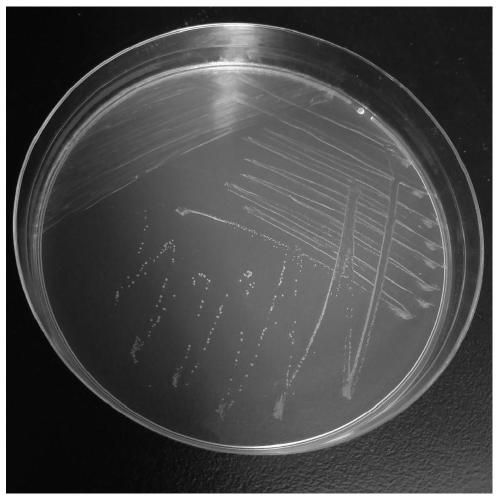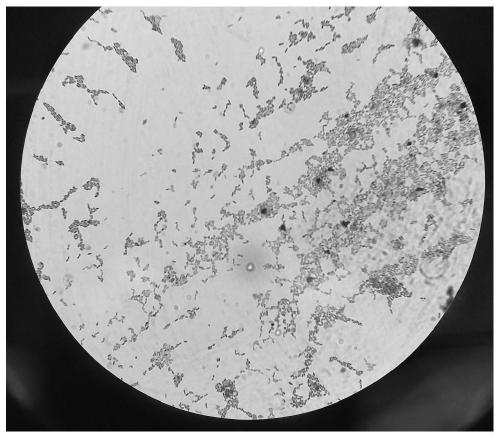Weissella confuse strain with antibacterial and antioxidant activity and application thereof
Antioxidant activity, technology of Weissella, applied in the field of microbiology
- Summary
- Abstract
- Description
- Claims
- Application Information
AI Technical Summary
Problems solved by technology
Method used
Image
Examples
Embodiment 1
[0023] Pathogen antagonism test
[0024] The antagonistic activity of fusion Weissella YM5S2 against pathogenic bacteria was detected by punching method. The fusion Weissella YM5S2 was inoculated in MRS liquid medium, and incubated at 37° C. for 24 hours. The bacteria-containing liquid medium was centrifuged at 12000 r / min for 10 min, and the supernatant was filtered through a 0.22 μm filter membrane to obtain a cell-free supernatant. Escherichia coli, Staphylococcus aureus, and Salmonella typhimurium were inoculated in nutrient broth medium respectively, and cultured at 37°C for 18 hours as indicator bacteria for later use. Mix 100 μL of indicator bacteria solution into 100 mL of sterile nutrient broth solid medium, and pour it into a petri dish. Take 60 μL of the above-mentioned cell-free supernatant and add it to the well (5mm) of the plate containing the indicator bacteria. After culturing overnight at 37°C, measure and record the diameter of the inhibition zone.
[002...
Embodiment 2
[0027] Antioxidant activity detection
[0028] The fusion Weissella YM5S2 was inoculated in MRS liquid medium, and incubated at 37° C. for 24 hours. The bacteria-containing liquid medium was centrifuged at 12,000 r / min for 10 min, and the supernatant was filtered through a 0.22 μm filter membrane to obtain a cell-free supernatant.
[0029] a. DPPH free radical scavenging activity
[0030] 0.4 mL of the above cell-free supernatant was mixed with 1.6 mL of freshly prepared 0.2 mM DPPH (ethanol as solvent) solution, and reacted in the dark for 25 minutes. The same amount of MRS medium was used to replace the cell-free supernatant as the control group. OD after reaction 517 The value of the control group is A 0 , the experimental group is denoted as A 1 . Then the DPPH free radical scavenging rate is: (A 0 -A 1 ) / A 0 ×100%. Each group of experiments was performed in parallel three times.
[0031] The DPPH free radical scavenging rate of Weissella YM5S2 fusion was 44.65%...
Embodiment 3
[0036] antibiotic resistance
[0037] Antibiotic resistance was evaluated using the Kirby-Bauer disk diffusion method according to the testing standards of the American Clinical and Laboratory Standards Institute (CLSI). The drug susceptibility test results were divided into the following three levels: resistant (Resistant), intermediate (Intermediate) and sensitive (Susceptible). As shown in Table 1, the fusion Weissella YM5S2 is sensitive to most antibiotics, has no drug resistance, and has high safety.
[0038] Table 1. Antibiotic resistance of Weissella fusion YM5S2
[0039]
PUM
 Login to View More
Login to View More Abstract
Description
Claims
Application Information
 Login to View More
Login to View More - R&D
- Intellectual Property
- Life Sciences
- Materials
- Tech Scout
- Unparalleled Data Quality
- Higher Quality Content
- 60% Fewer Hallucinations
Browse by: Latest US Patents, China's latest patents, Technical Efficacy Thesaurus, Application Domain, Technology Topic, Popular Technical Reports.
© 2025 PatSnap. All rights reserved.Legal|Privacy policy|Modern Slavery Act Transparency Statement|Sitemap|About US| Contact US: help@patsnap.com



